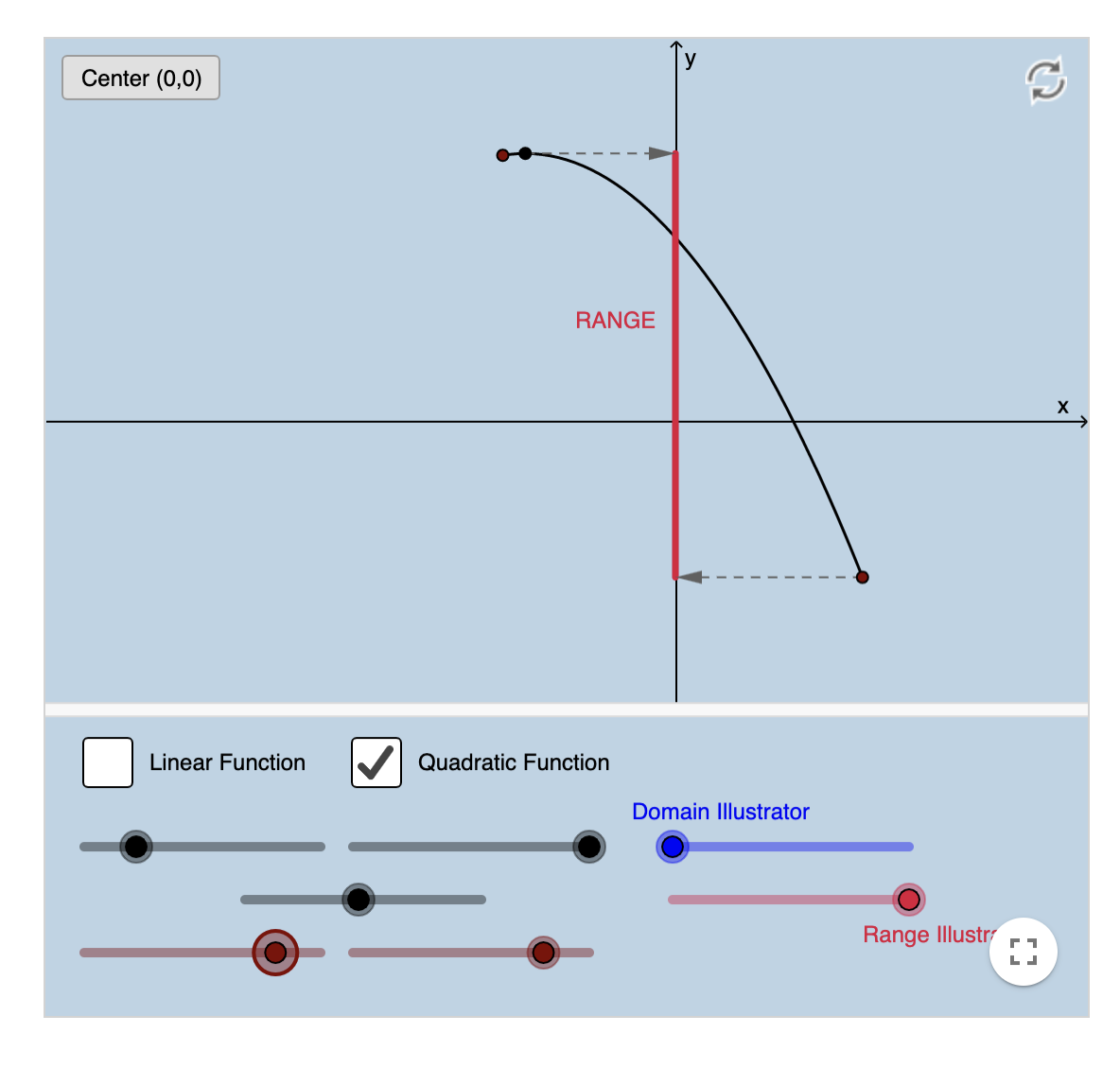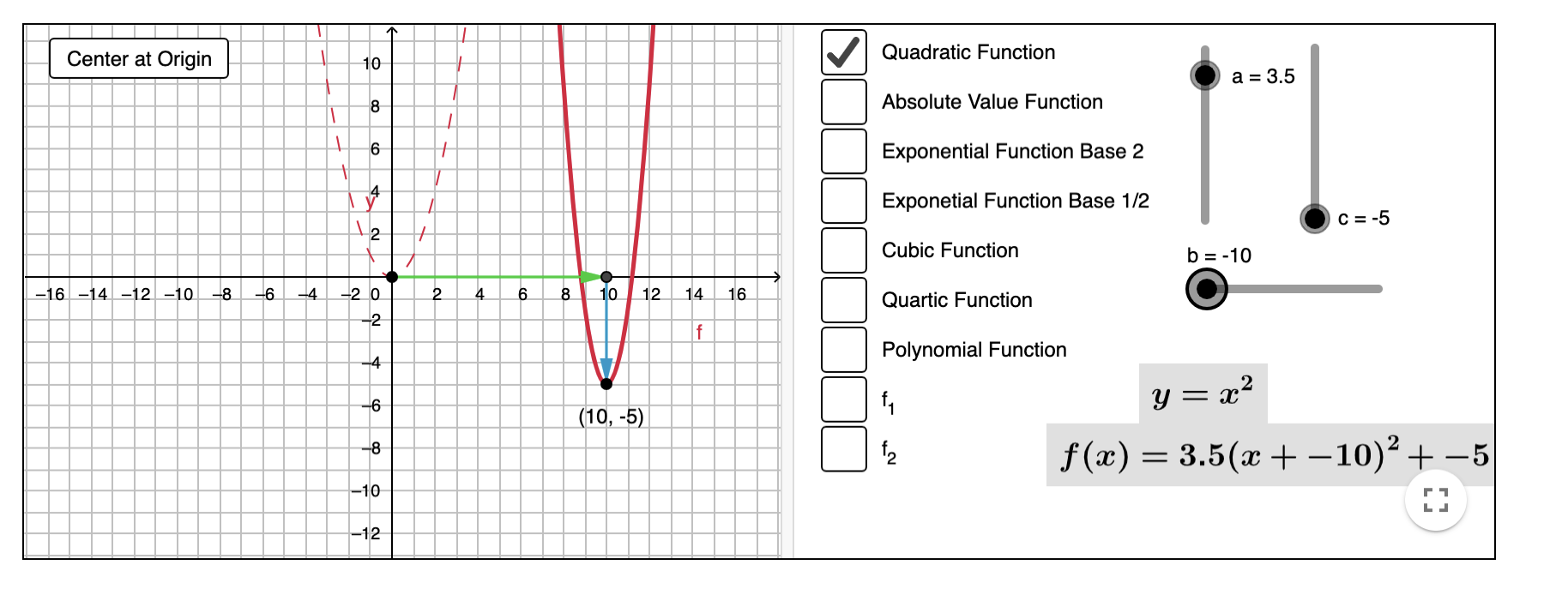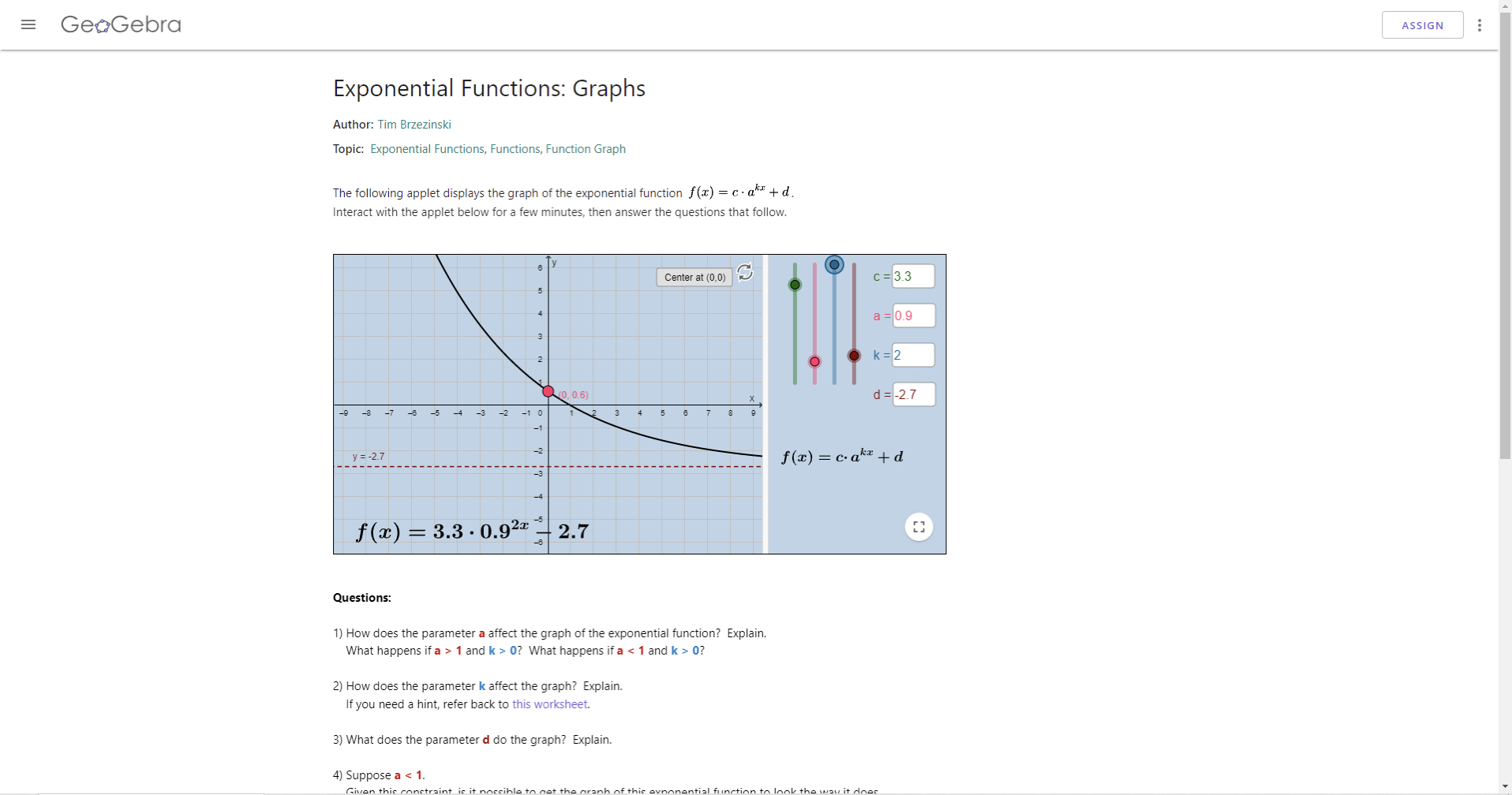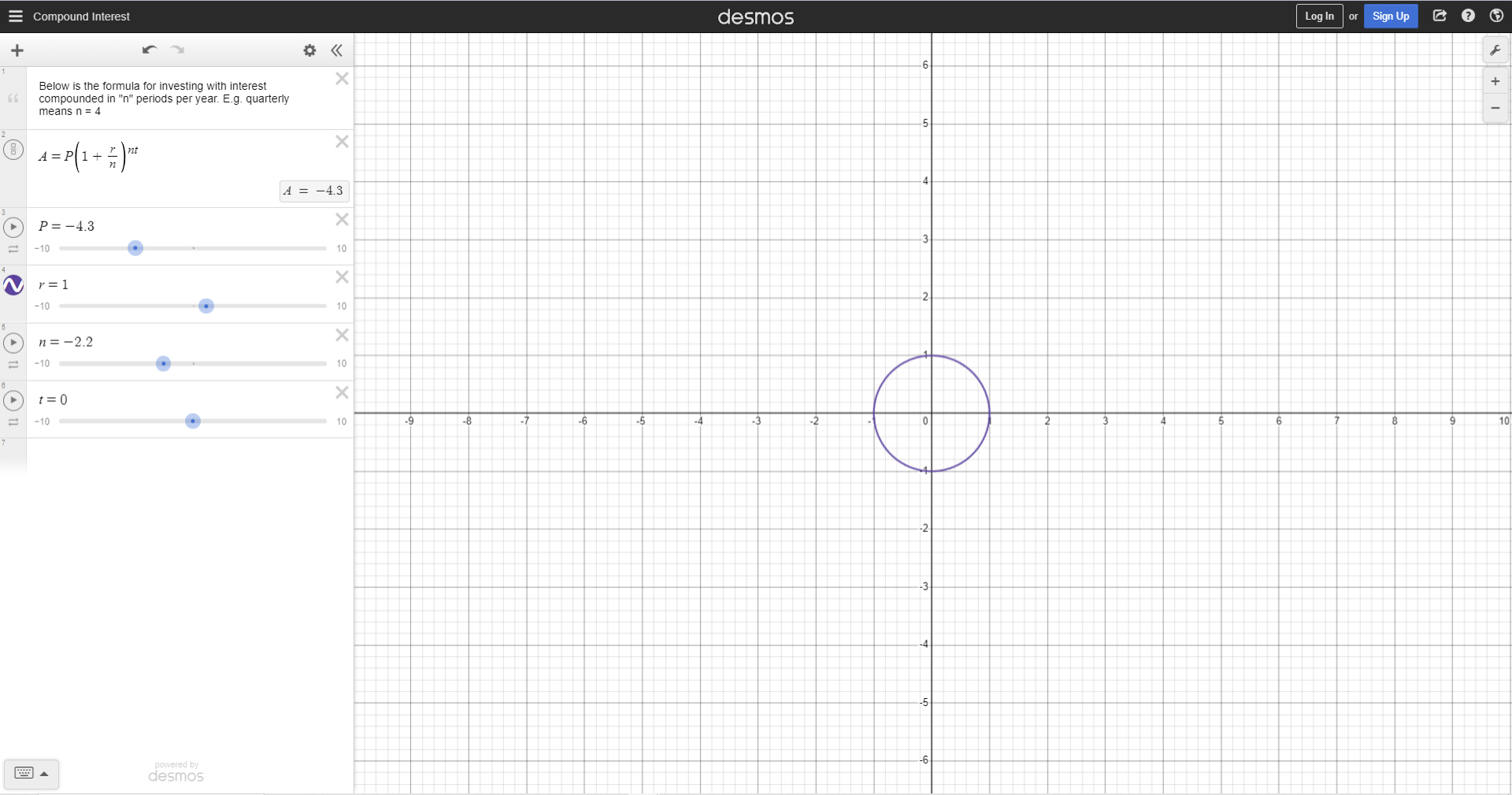Getting Started
Intended Usage and Goals For Modules
Instructions For Each Module
I. Pick two activities from those listed below. Interact with each one for a few minutes, trying every variation presented.
II. Write down two observations and one question you have for each activity (that’s 6 items total). Please use complete sentences. Observations should be about the math behind the applet, not a technical issue. If you want to add comments about technical issues, please do so at the end.
III. Include a screengrab of each activity you completed.
IV. Respond to another classmate’s question.
Rubric For Grading
It is recommended that instructors grade on a completion basis using the instructions as a guideline. For example: Did the student complete the required number of activities? Did they complete two observations and one question? Did they include screengrabs? Did they reply to a classmate?
Access to All Modules
Student Samples
Student A, Unit 2 College Algebra

Activity 1: Domain and Range activity on Geogebra.
Observation 1: One thing that I noticed is that range has to do with the y-axis and domain has to do with the x-axis.
Observation 2: The second thing that I noticed is that just because domain changes does not mean that the range has to and vice versa.
Question: when there are multiple parts to a function, does the domain and range get counted altogether.

Activity 2: Transformation Geogebra activity.
Observation 1: One thing that I noticed is that as the A value gets closer to 0, the function gets wider.
Observation 2: The second thing that I noticed is that when you want to move the function to the right, you need to plug in a negative value for B instead of a positive value (and a positive value will push the function to the left.
Question: are all A, B, and C values in the same spot in every function? If they are not, then how can you determine what number is which?
Student B, Unit 2 Pre-Calculus

Activity 1: Exponential Function Graphs
Observation 1: A change in the variable C is a change in the y-intercept.
Observation 2: A and K control the slope of the function.
Question: Why can’t the line go below y when y=b?

Activity 2: Desmos Exploration of Compound Interest
Observation 1: When n=0, A is undefined.
Observation 2: when t=0, A becomes equal to P.
Question: What if the “1” in the equation became a negative one?